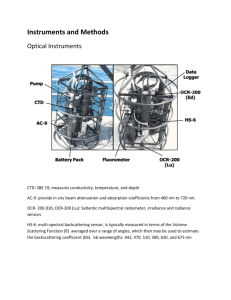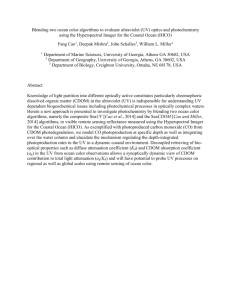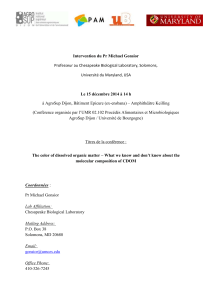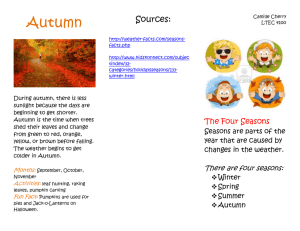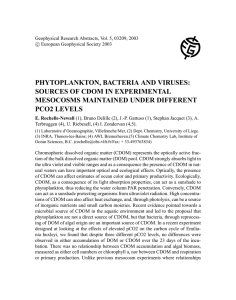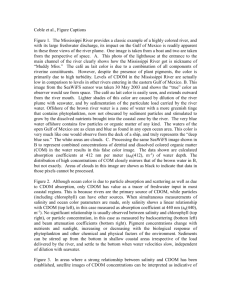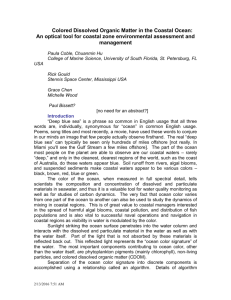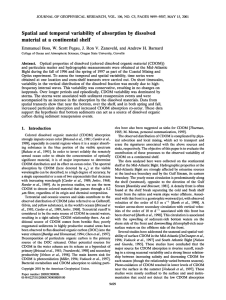New models for deriving and partitioning absorption
advertisement
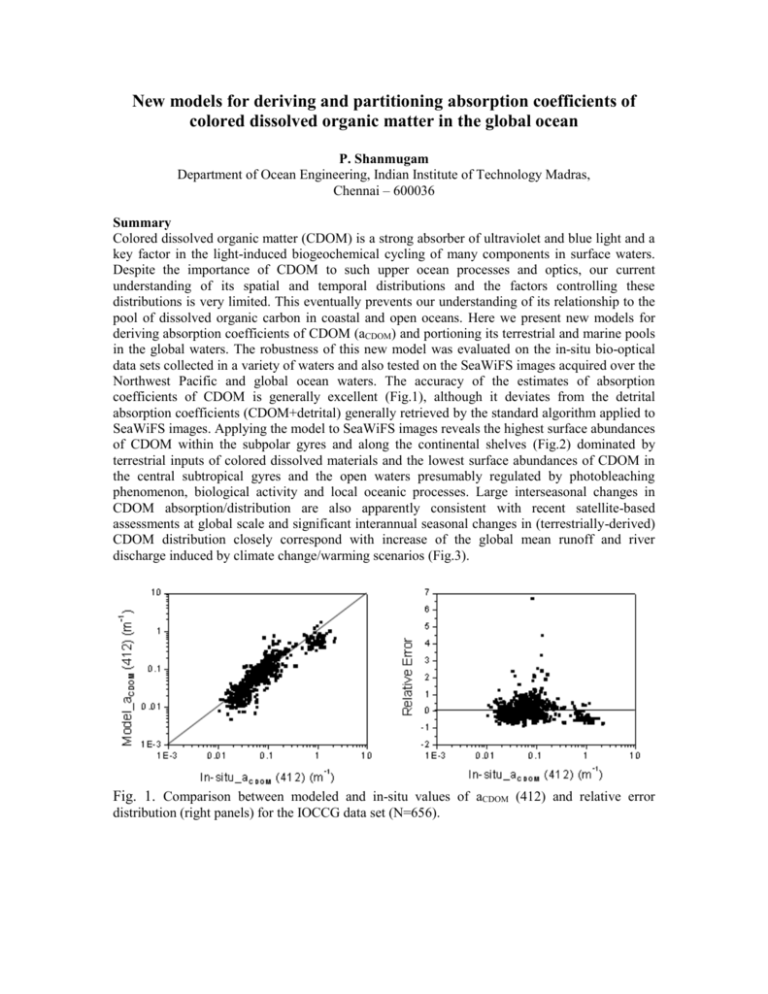
New models for deriving and partitioning absorption coefficients of colored dissolved organic matter in the global ocean P. Shanmugam Department of Ocean Engineering, Indian Institute of Technology Madras, Chennai – 600036 Summary Colored dissolved organic matter (CDOM) is a strong absorber of ultraviolet and blue light and a key factor in the light-induced biogeochemical cycling of many components in surface waters. Despite the importance of CDOM to such upper ocean processes and optics, our current understanding of its spatial and temporal distributions and the factors controlling these distributions is very limited. This eventually prevents our understanding of its relationship to the pool of dissolved organic carbon in coastal and open oceans. Here we present new models for deriving absorption coefficients of CDOM (aCDOM) and portioning its terrestrial and marine pools in the global waters. The robustness of this new model was evaluated on the in-situ bio-optical data sets collected in a variety of waters and also tested on the SeaWiFS images acquired over the Northwest Pacific and global ocean waters. The accuracy of the estimates of absorption coefficients of CDOM is generally excellent (Fig.1), although it deviates from the detrital absorption coefficients (CDOM+detrital) generally retrieved by the standard algorithm applied to SeaWiFS images. Applying the model to SeaWiFS images reveals the highest surface abundances of CDOM within the subpolar gyres and along the continental shelves (Fig.2) dominated by terrestrial inputs of colored dissolved materials and the lowest surface abundances of CDOM in the central subtropical gyres and the open waters presumably regulated by photobleaching phenomenon, biological activity and local oceanic processes. Large interseasonal changes in CDOM absorption/distribution are also apparently consistent with recent satellite-based assessments at global scale and significant interannual seasonal changes in (terrestrially-derived) CDOM distribution closely correspond with increase of the global mean runoff and river discharge induced by climate change/warming scenarios (Fig.3). Fig. 1. Comparison between modeled and in-situ values of aCDOM (412) and relative error distribution (right panels) for the IOCCG data set (N=656). Fig.2. The aCDOM patterns in the North Atlantic inferred from the SeaWiFS images for the winter (December-February), spring (March-May), summer (June-August) and autumn (September-November) 1998. Global cover 6 8.00x10 6 6.00x10 6 2 1.20x107 1.20x10 8 1.12x10 7 1.00x108 1.04x10 2 3 -1 Global coverage area River discharge ) ) (m s(km Spring Summer Autumn Summer Summer Autumn Autumn Summer Summer Period Period Autumn Autumn Summer Autumn Period 8 1.28x107 1.40x10 2 Global Global coverage coverage area (km area)(km ) 4.00x10 Winter 8 6 7 8.00x10 9.60x10 7 6 8.80x10 6.00x10 7 8.00x106 4.00x10 Winter Winter Spring Spring Period Period 4 3.0x108 1.28x10 4 2.7x108 1.20x10 4 2.4x108 1.12x10 4 2.1x108 1.04x10 4 1.8x107 9.60x10 4 1.5x107 8.80x10 4 1.2x107 8.00x10 Winter Winter Spring Spring 4 3 -1 River discharge (m s ) 3.0x10 Fig. 3. Seasonal patterns of the global coverage area with CDOM terrestrially transported into the coastal seas via rivers4 and runoff from land and the observed seasonal river 2.7x10 discharge records. 4 2.4x10 4 2.1x10 4 1.8x10 4 1.5x10 4 1.2x10 Winter Spring Period
